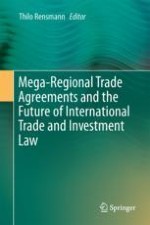2017 | OriginalPaper | Buchkapitel
Exception Clauses in Mega-Regionals (International Investment Protection and Trade Agreements)
verfasst von : Armand de Mestral, Lukas Vanhonnaeker
Erschienen in: Mega-Regional Trade Agreements
Aktivieren Sie unsere intelligente Suche, um passende Fachinhalte oder Patente zu finden.
Wählen Sie Textabschnitte aus um mit Künstlicher Intelligenz passenden Patente zu finden. powered by
Markieren Sie Textabschnitte, um KI-gestützt weitere passende Inhalte zu finden. powered by
